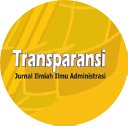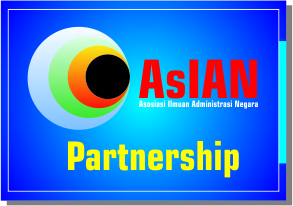Strategi Membangun Keterampilan Berpikir Kritis untuk Generasi Alpha Z
DOI:
https://doi.org/10.31334/transparansi.v7i1.3752Keywords:
Critical Thinking, Generasi Alpha Z, Soft skills, Revolusi Industri 4.0, Society 5.0,Abstract
Soft skills berpikir kritis ( critical thingking ) merupakan salah satu keterampilan yang sangat diperlukan oleh Gen Z dan Alpha Z agar mereka dapat menikmati kemajuan revolusi Industri dengan baik dan terhindar dari hoaks dan informasi palsu yang dapat memengaruhi dalam pengambilan Keputusan sehari-hari baik di dunia kerja maupun dalam kehidupan sehari-hari. Artikel ini bertujuan untuk menguraikan model strategi efektif untuk membangun kemampuan berpikir kritis bagi generasi Alpha Z. Dimana generasi ini memiliki ciri khas tersendiri dalam memproses informasi dan berinteraksi dengan dunia sekitarnya, sehingga memerlukan pendekatan yang sesuai dengan budaya mereka, dalam pengajaran berpikir kritis. Metode yang digunakan dalam penelitian ini adalah studi literature dengan mengumpulkan dan menelaah data pustaka dalam 5 tahun terakhir baik dari jurnal terakreditasi internasional bereputasi seperti Scopus maupun jurnal terakreditasi sinta, yang kemudian dihubungkan dengan penelitian untuk memperoleh jawaban dari permasalahan. Hasil penelitian menunjukan bahwa terdapat banyak strategi dan model yang dapat digunakan untuk membangun keterampilan berfikir kritis pada generasi alpha Z yaitu: melalui bantuan simulasi teknologi, Pemecahan masalah, Problem based learning (PBL), Pembelajaran berbasis Proyek dan kolaboratif, mind map, melalui dialog mendalam dan pertanyaan terbuka serta diskusi. Abstract (English) Critical thinking soft skills are one of the skills that Gen Z and Alpha Z need to enjoy the progress of the Industrial Revolution well and avoid hoaxes and false information that can affect daily decision-making both in the world of work and in everyday life. This article outlines a practical strategy model for building critical thinking skills for Generation Alpha Z. This generation has its own characteristics in processing information and interacting with the surrounding world, so it requires an approach that suits their culture in teaching critical thinking. The method used in this research is a literature study by collecting and reviewing literature data in the last 5 years both from reputable internationally accredited journals such as Scopus and sinta-accredited journals, which are then associated with research to get answers to problems. The results show that there are many strategies and models that can be used to build critical thinking skills in alpha Z generation, namely: through the help of technology simulation, problem solving, Problem based learning (PBL), project-based and collaborative learning, mind maps, through in-depth dialogue and open questions and discussions.References
Ali, N., Crawford, R., & Horn, M. (2019). Critical thinking in PBL: Development of a bespoke tool for critical thinking. 5th International Conference on Higher Education Advances (HEAd’19) Universitat Polit`ecnica de Val`encia, Val`encia, 2019, 513–520. https://doi.org/10.4995/head19.2019.9366
Almulla, M. A., & Al-Rahmi, W. M. (2023). Integrated Social Cognitive Theory with Learning Input Factors: The Effects of Problem-Solving Skills and Critical Thinking Skills on Learning Performance Sustainability. Sustainability (Switzerland), 15(5). https://doi.org/10.3390/su15053978
Alwan, M. (2022). Strategi Membangun Kemampuan Critical Thinking Pada Generasi Digital. Jurnal Al Muta’aliyah: Pendidikan Guru Madrasah Ibtidaiyah, 2(2), 19–27. https://doi.org/10.51700/almutaliyah.v2i2.354
Arifin, S., Setyosari, P., Sa’dijah, C., & Kuswandi, D. (2020). The effect of problem-based learning by cognitive style on critical thinking skills and students' retention. Journal of Technology and Science Education, 10(2), 271–281. https://doi.org/10.3926/JOTSE.790
Chacón-López, H. (2021). Increased creative production in Spanish university students of Education. Thinking Skills and Creativity, 41(June). https://doi.org/10.1016/j.tsc.2021.100908
Habibah, F. N., Setiadi, D., Bahri, S., & Jamaluddin, J. (2022). Pengaruh Model Problem Based Learning berbasis Blended Learning terhadap Keterampilan Berpikir Kritis Peserta Didik Kelas XI di SMAN 2 Mataram. Jurnal Ilmiah Profesi Pendidikan, 7(2b), 686–692. https://doi.org/10.29303/jipp.v7i2b.603
Hatami, F., Tahmasbi, F., & Hatami Shahmir, E. (2017). CRITICAL THINKING SKILL: KONSEP DAN INIDIKATOR PENILAIAN. Neuropsychology, 3(8), 85–102. http://clpsy.journals.pnu.ac.ir/article_3887.html
Ho, Y. R., Chen, B. Y., & Li, C. M. (2023). Thinking more wisely: using the Socratic method to develop critical thinking skills amongst healthcare students. BMC Medical Education, 23(1), 1–16. https://doi.org/10.1186/s12909-023-04134-2
Jha, A. K. (2020). Understanding Generation Alpha. PsyArxiv, August. https://doi.org/10.31219/osf.io/d2e8g
Kurniawan, S. J., & Rahman, F. A. (2019). Implementation of Deep Dialogue/Critical Thinking in Guidance and Counseling Services: Critical Role Solutions Improve Thingking Skills on Z Generation. Social, Humanities, and Educational Studies (SHEs): Conference Series, 2(2), 47. https://doi.org/10.20961/shes.v2i2.38545
Lantian, A., Bagneux, V., Delouvée, S., & Gauvrit, N. (2021). Maybe a free thinker but not a critical one: High conspiracy belief is associated with low critical thinking ability. Applied Cognitive Psychology, 35(3), 674–684. https://doi.org/10.1002/acp.3790
Li, Z., Zhou, M., & Lam, K. K. L. (2022). Dance in Zoom: Using video conferencing tools to develop students' 4C skills and self-efficacy during COVID-19. Thinking Skills and Creativity, 46(November 2020), 101102. https://doi.org/10.1016/j.tsc.2022.101102
Liu, Y., & Pásztor, A. (2022). Design and validate the Employer-Employee-Supported Critical Thinking Disposition Inventory (2ES-CTDI) for undergraduates. Thinking Skills and Creativity, 46(February). https://doi.org/10.1016/j.tsc.2022.101169
Mcgill, T., & Bax, S. (2005). Learning IT: Where Do Lecturers Fit? International Journal of Information and Communication Technology Education (IJICTE), 1(3), 36–46. https://doi.org/10.4018/jicte.2005070103
Nasution, N. E. A., Al Muhdhar, M. H. I., Sari, M. S., & Balqis. (2023). Relationship between Critical and Creative Thinking Skills and Learning Achievement in Biology with Reference to Educational Level and Gender. Journal of Turkish Science Education, 20(1), 66–83. https://doi.org/10.36681/tused.2023.005
O'Reilly, C., Devitt, A., & Hayes, N. (2022). Critical thinking in the preschool classroom - A systematic literature review. Thinking Skills and Creativity, 46(August). https://doi.org/10.1016/j.tsc.2022.101110
Rowe, M. P., Marcus Gillespie, B., Harris, K. R., Koether, S. D., Shannon, L. J. Y., & Rose, L. A. (2015). Redesigning a general education science course to promote critical thinking. CBE Life Sciences Education, 14(3), 1–12. https://doi.org/10.1187/cbe.15-02-0032
Sari, R. M., Sumarmi, Astina, I. K., Utomo, D. H., & Ridhwan. (2021). Increasing Students Critical Thinking Skills and Learning Motivation Using Inquiry Mind Map. International Journal of Emerging Technologies in Learning, 16(3), 4–19. https://doi.org/10.3991/ijet.v16i03.16515
Shavkatovna, S. R., & Abdukhamid qizi, A. K. (2021). Developing Critical Thinking In Primary School Students. International Conference on Innovations in Sciences, Education and Humanities, 97–102.
Ssenyonga, R., Sewankambo, N. K., Mugagga, S. K., Nakyejwe, E., Chesire, F., Mugisha, M., Nsangi, A., Semakula, D., Oxman, M., Nyirazinyoye, L., Lewin, S., Kaseje, M., Oxman, A. D., & Rosenbaum, S. (2022). Learning to think critically about health using digital technology in Ugandan lower secondary schools: A contextual analysis. PLoS ONE, 17(2 February), 1–22. https://doi.org/10.1371/journal.pone.0260367
Sujanem, R., Nyoman, I., Suwindra, P., & Suswandi, I. (2022). Efektivitas E-Modul Fisika Berbasis Masalah Berbantuan Simulasi PHET Dalam Ujicoba Terbatas Untuk Meningkatkan Keterampilan Berpikir Kritis Siswa SMA. Jurnal Pendidikan Fisika Undiksha, 12(2), 181–191.
Szabó, D., & Dani, E. (2022). Smartphones and social media as status symbol of Gen Z. Folia Toruniensia, 22, 87–111. https://doi.org/10.12775/FT.2022.005
van Peppen, L. M., Verkoeijen, P. P. J. L., Heijltjes, A. E. G., Janssen, E. M., & van Gog, T. (2021). Enhancing students' critical thinking skills: is comparing correct and erroneous examples beneficial? In Instructional Science (Vol. 49, Issue 6). Springer Netherlands. https://doi.org/10.1007/s11251-021-09559-0
Wu, H. Z., & Wu, Q. T. (2020). Impact of mind mapping on the critical thinking ability of clinical nursing students and teaching application. Journal of International Medical Research, 48(3). https://doi.org/10.1177/0300060519893225
Yu, Z., Hu, R., Ling, S., Zhuang, J., Chen, Y., Chen, M., & Lin, Y. (2021). Effects of blended versus offline case-centred learning on undergraduate nursing students' academic performance and critical thinking ability: A cluster randomised controlled trial. Nurse Education in Practice, 53(May), 103080. https://doi.org/10.1016/j.nepr.2021.103080
Ziatdinov, R., & Cilliers, J. (2021). Generation Alpha: Understanding the Next Cohort of University Students. European Journal of Contemporary Education, 10(3), 783–789. https://doi.org/10.13187/ejced.2021.3.783
Zulkifli, N. N., Halim, N. D. A., Yahaya, N., van der Meijden, H., Zaid, N. M., Rashid, A. H. A., & Hashim, S. (2021). Online Reciprocal Peer Tutoring Approach in Facebook: Measuring Students' Critical Thinking. International Journal of Emerging Technologies in Learning, 16(23), 16–28. https://doi.org/10.3991/ijet.v16i23.27451
Downloads
Published
Issue
Section
License

This work is licensed under a Creative Commons Attribution-ShareAlike 4.0 International License
Please find the rights and licenses in Transparansi : Jurnal Ilmiah Ilmu Administrasi By submitting the article/manuscript of the article, the author(s) agree with this policy. No specific document sign-off is required.
- License
The commercial use of the article will be governed by the Creative Commons Attribution license as currently displayed on Creative Commons Attribution-ShareAlike 4.0 International License.
2. Author(s)' Warranties
The author warrants that the article is original, written by stated author(s), has not been published before, contains no unlawful statements, does not infringe the rights of others, is subject to copyright that is vested exclusively in the author and free of any third party rights, and that any necessary written permissions to quote from other sources have been obtained by the author(s).
3. User Rights
Transparansi : Jurnal Ilmiah Ilmu Administrasi spirit is to disseminate articles published are as free as possible. Under the Creative Commons license, Transparansi : Jurnal Ilmiah Ilmu Administrasi permits users to copy, distribute, display, and perform the work for non-commercial purposes only. Users will also need to attribute authors and Transparansi : Jurnal Ilmiah Ilmu Administrasi on distributing works in the journal and other media of publications.
4. Co-Authorship
If the article was jointly prepared by more than one author, any authors submitting the manuscript warrants that he/she has been authorized by all co-authors to be agreed on this copyright and license notice (agreement) on their behalf, and agrees to inform his/her co-authors of the terms of this policy. Transparansi : Jurnal Ilmiah Ilmu Administrasi will not be held liable for anything that may arise due to the author(s) internal dispute. Transparansi : Jurnal Ilmiah Ilmu Administrasi will only communicate with the corresponding author.
5. Miscellaneous
Transparansi : Jurnal Ilmiah Ilmu Administrasi will publish the article (or have it published) in the journal if the article’s editorial process is successfully completed. Transparansi : Jurnal Ilmiah Ilmu Administrasi editors may modify the article to a style of punctuation, spelling, capitalization, referencing and usage that deems appropriate. The author acknowledges that the article may be published so that it will be publicly accessible and such access will be free of charge for the readers as mentioned in point 3.
Every accepted manuscript should be accompanied by "Copyright Transfer Agreement"prior to the article publication.











